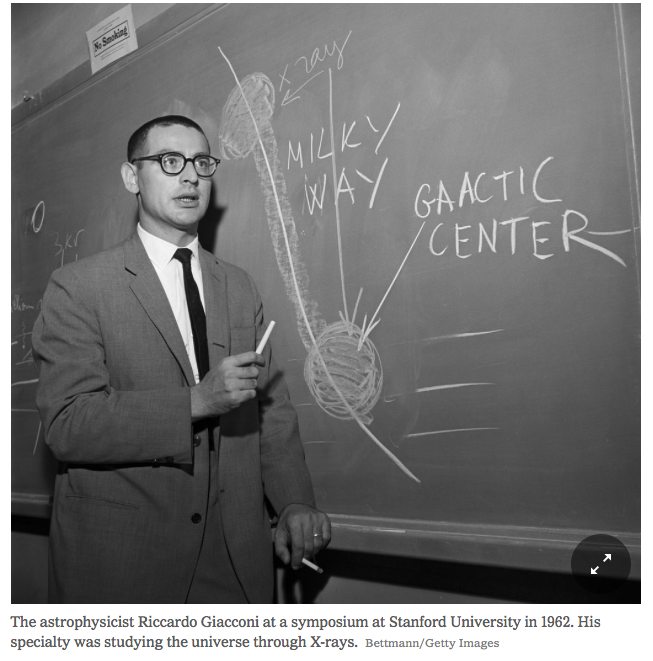
Ricardo Giacconi, known as the founder of X-ray astronomy, died on Sunday 9th of December at the age of 87.
Dr. Giacconi got his PhD in physics at the University of Milan in 1954. He stayed there for another two years, conducting research on cosmic rays. He then moved to the States and continued his research at the Indiana and Princeton Universities, before ending up at American Science and Engineering in Cambridge, Mass. There, he participated in experiments conducted on brief rocket flights, some to detect X-rays from high-altitude atomic bomb tests.
In 1962 his group launched their first rocket to look for X-rays created by cosmic rays bouncing off the moon. Instead, they found a powerful source of X-rays known today as Sco X-1. In 1970, the group launch the first X-ray astronomy satellite, named Uhuru, that discovered hundreds of cosmic X-ray sources. Most of them originated from black holes. That was the first observational evidence that these cosmic beasts were real.
In 1973, Dr Giacconi moved to Harvard-Smithsonian Center for Astrophysics, where, in 1978, the Einstein X-ray Observatory was launched. Before moving to become the first director of the Space Telescope Science Institute, on the Johns Hopkins University in Baltimore, in 1981, he put into action plans for the next X-ray observatory called Chandra, that still operates today.
In Baltimore, the institute was in charge of operating the Hubble Space Telescope (HST), which was then being built and tested. In 1990, shortly after its launch it was discovered that the primary mirror of the HST was unable to focus images. To address this major problem Dr Giacconi organised working groups of astronauts, engineers and experts on software and optics. In 1993, new optics were installed on HST, restoring its vision.
In the meantime, Dr Giacconi had moved to the European Southern Observatory (ESO), serving as the general director. At ESO he supervised the building of the world’s largest array of telescopes, known as the Very Large Telescope (VLT), in Chile.
Dr Giacconi moved back to the States in 1999 and become president of Associated Universities, a consortium that runs the National Radio Astronomy Observatory for the National Science Foundation. Using his previous experience Dr Giacconi helped the building of the radio observatory in Chile, named Atacama Large Millimeter Array (ALMA). ALMA commenced operating in 2011.
Meanwhile, Dr Giacconi had retired in 2007. During his career he supervised the construction of observatories that covered the electromagnetic spectrum from X-rays to radio waves. Before his retirement, in 2002, he was awarded a half share of the Nobel prize along the astrophysicists Raymond Davis Jr. and Masatoshi Koshiba, among other prestigious awards.
Source: The NY Times
